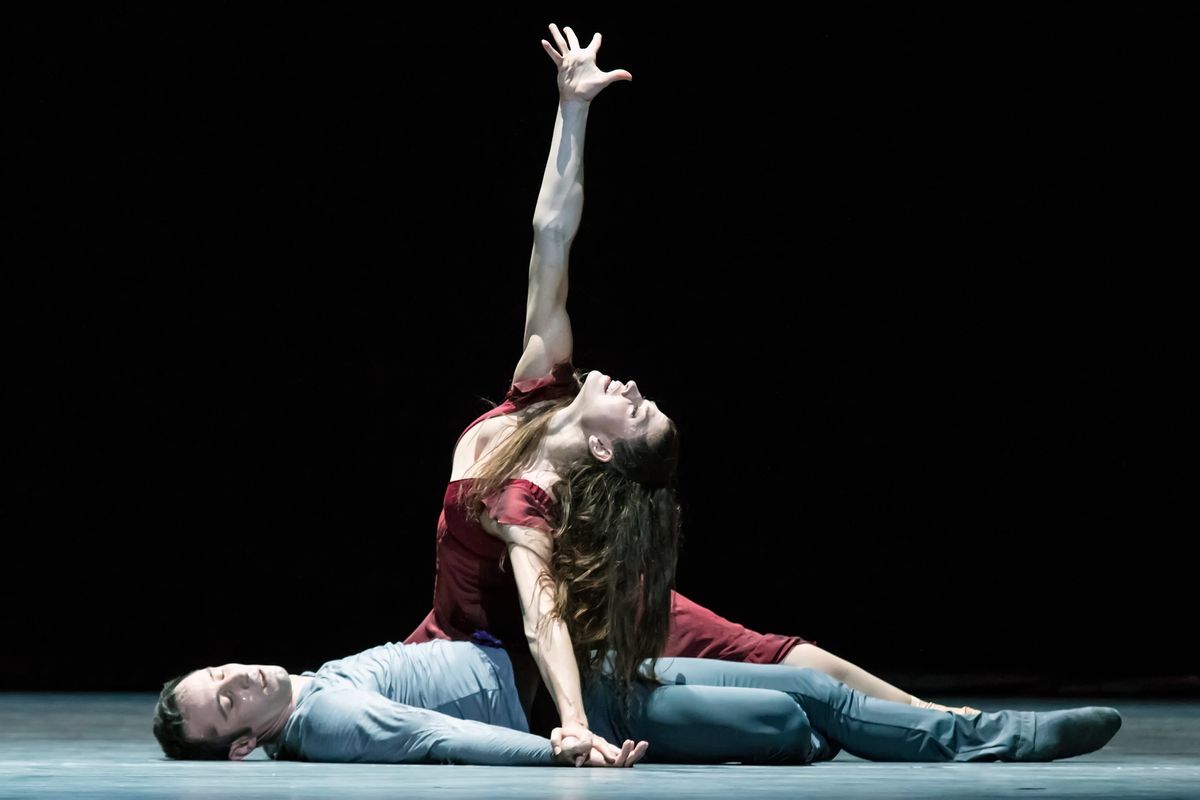Courtney Richardson: The Dresden Semperoper Ballett Dancer Finds Her Niche in David Dawson's Work
This story originally appeared in the August/September 2015 issue of
Pointe.
At Dresden’s Semperoper, one of Europe’s finest opera houses, the curtain comes down on the premiere of David Dawson’s Tristan + Isolde. When Courtney Richardson, as Isolde, steps forward to take her bow, the applause rises to a crescendo. The ballet had found its heart in her first solo, expressed in powerful, neoclassical lines suffused with passion. Tristan marked her first full-evening creation in Dresden and the culmination of a long journey from Detroit.
“When we discussed Tristan,” Dawson remembers, “I realized immediately that Courtney would be my Isolde. She’s a stunning woman, a very real person with an incredible amount of depth, emotion and artistic vision. And she has an amazing sense of coordination and musicality.” It’s these qualities that have made Richardson something of a muse for Dawson, a collaborative relationship that eventually brought her to Dresden.
An active child, Richardson was sent to her first dance classes at age 3 in Detroit. A later teacher recognized her talent and suggested she train at a professional school. Richardson attended Canada’s National Ballet School and then joined National Ballet of Canada for three seasons.
 Richardson with Dawson and Voranger in rehearsal for “Tristan + Isolde.” Photo by Ian Whalen, Courtesy Dresden Semperoper Ballett.
Richardson with Dawson and Voranger in rehearsal for “Tristan + Isolde.” Photo by Ian Whalen, Courtesy Dresden Semperoper Ballett.
But she found she was not enjoying dancing. “I needed to get out of my comfort zone,” she says. “I think I hadn’t discovered who I was as a dancer.”
Richardson joined Ballet BC in 2003. Then directed by choreographer John Alleyne, it had a strong contemporary bias. “It was a struggle for me to change so much—ballet dancers are not used to rolling on the floor,” she says. “I found a new voice and new way of working that I really enjoyed.”
Europe beckoned and she gained an audition for the Royal Ballet of Flanders in 2005. Her audition day was auspicious. Kathryn Bennetts was the new artistic director, and guest choreographer David Dawson was casting for The Grey Area. “After class Kathy sent me to work with David,” Richardson says. It was her first encounter with his expansive style: ballet poised on a postmodern knife-edge and never completely abstract. “I loved the work and the movement. He was a huge reason why I went to Flanders,” she says. Once there, she continued to explore his work.
 Richardson with Voranger in “Tristan + Isolde.” Photo by Ian Whalen, Courtesy Dresden Semperoper Ballett.
Richardson with Voranger in “Tristan + Isolde.” Photo by Ian Whalen, Courtesy Dresden Semperoper Ballett.
The Third Light
in 2010 was Dawson’s first creation for Richardson. When rehearsals started she was going through a divorce and he wanted to use that as a backstory. “I kind of didn’t like the idea but wanted to stay open,” she says. “Dance has always been the place where I feel braver and able to expose myself. That first time creating together, we found our rhythm.”
In 2012 Bennetts left Flanders, and Richardson did soon after. “I wasn’t sure if I wanted to continue with classical or take the modern route,” she says, “but I knew it would be more of a challenge to work with David again.” She contacted Dawson, who suggested auditioning for Dresden Semperoper Ballett, where he had previously been resident choreographer. They still have many of his works in the repertoire, plus regular commissions.
She joined Dresden in 2013, where she’s found a home in Dawson ballets like On the Nature of Daylight and Opus.11. And in 2015 came Tristan, her second creation. “David paired me with Fabien Voranger in his Giselle to build our relationship,” she says. “We worked for four or five weeks. It was nice to have private energy and be really focused.” Dawson agrees. “There is a constant exchange of artistic intention and respect,” he says. “It’s a deep relationship and one I treasure.”





